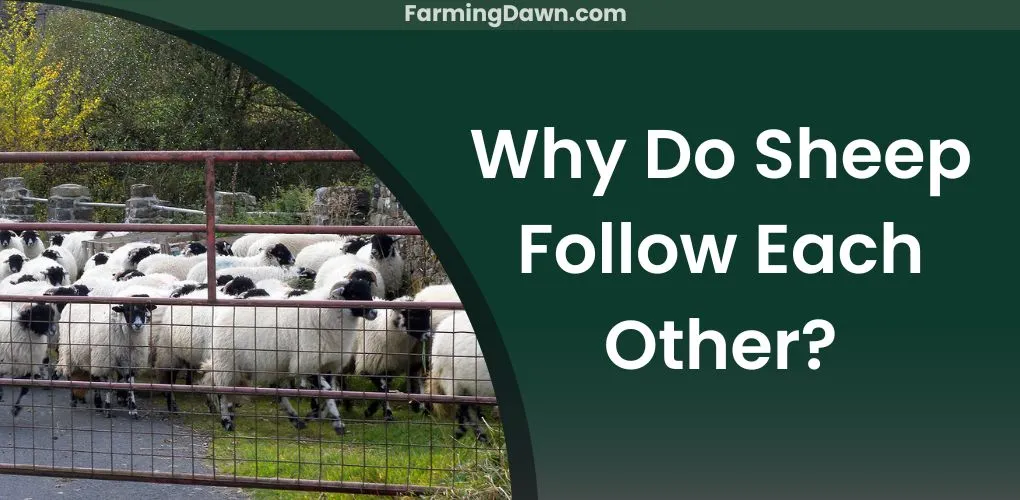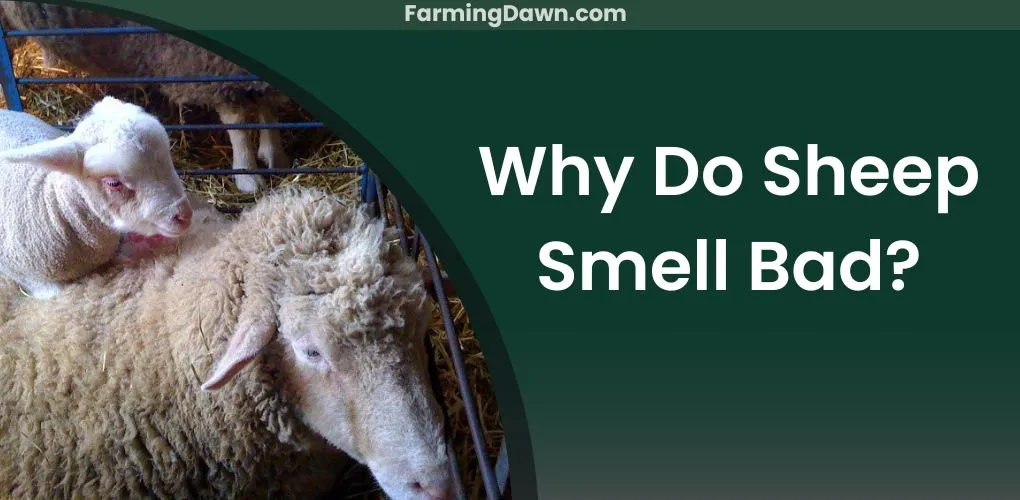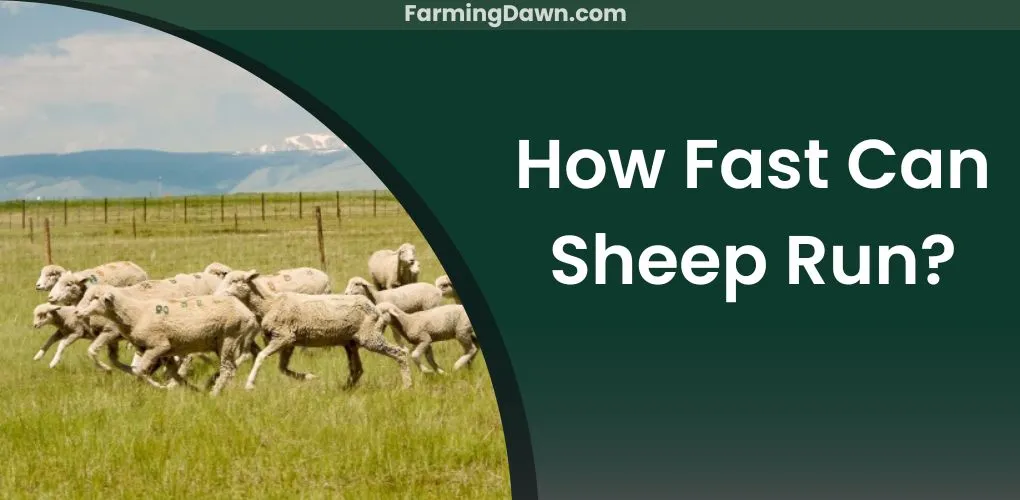Understanding the social dynamics of sheep is key to understanding why do sheep follow each other. Joel Salatin, the renowned farmer, and author, once said that “sheep follow, not because they’re dumb, but because they’re social.” As prey animals, sheep rely on each other for safety in numbers.
While it may seem like sheep are blindly following one another, they are making smart decisions based on their instincts and social behavior. Today I will discuss the phenomenon of sheep following each other because it is a fascinating topic that has long intrigued both farmers and scientists alike.
Why Do Sheep Follow Each Other? Explained
Sheep are social animals and move together in the form of a group. There can be various reasons why sheep follow each other including, psychological reasons, a sense of security, running from danger, searching for food, during breeding, sheep will follow each other, repetitive daily behavior, and environmental factors.
Psychological Factors
One of the primary causes of why sheep follow each other is psychological. Sheep are very motivated to remain in a flock since they are social creatures. Following each other helps them to maintain this sense of social community and prevent solitude.
A sense of security
Sheep also use the act of following one another to feel safe. When they are surrounded by their flock, they feel protected from potential predators or other dangers. This sense of security is essential for their survival in the wild.
Environmental Factors
Also, the environment has an impact on why sheep stick together. For instance, sheep will group to avoid being blown away when there is a high wind. Similarly, when it’s raining, they’ll move in lockstep to find cover from the rain.
Running from danger
Another reason why sheep follow each other is to escape from danger. One sheep will begin to flee when it detects danger. Other sheep in the group will see this behavior and start following the running sheep. They all do this to get away from the danger and stay safe.
Searching for food
Sheep also follow each other when searching for food. One sheep will begin munching as soon as it spots some grass or another food source. When other sheep in the herd observe this, they’ll start heading in that direction. In this way, they can all find enough food to sustain themselves.
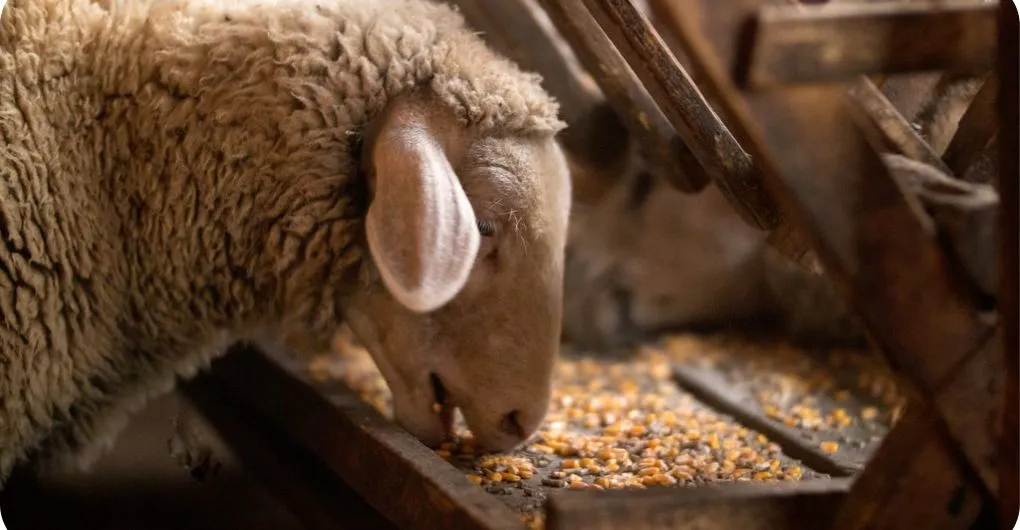
During breeding, sheep follow each other
Sheep naturally follow one another during breeding season as a mating ritual. As female sheep or ewes, search for potential mates, male sheep, or rams, will follow. The survival of the species depends on this habit. When the season of breeding comes potential male sheep headbutt with other sheep to shoe dominance in the flock. This helps them to choose a potential partner for mating.
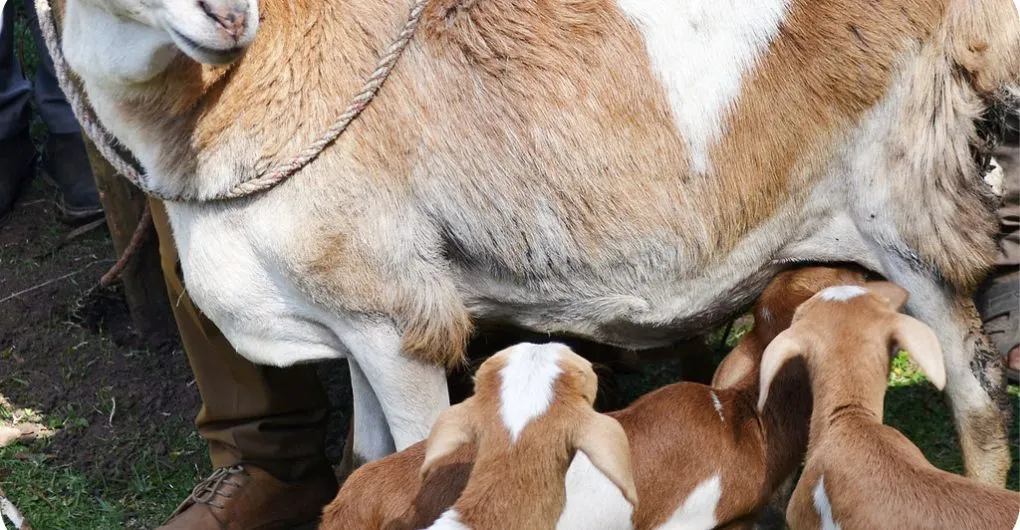
Repetitive Daily Behavior
Another explanation for why sheep follow one another is repetitive everyday behavior. Sheep are creatures of habit, and they frequently repeat the same daily routine. Whenever one sheep starts moving in a particular direction, the rest of the flock will follow, since they are used to doing so.
Why Livestock Move as Groups?
In nature, animals move as groups for protection and survival. This behavior is not only limited to sheep. You will observe that deer, goats, alpacas, horses, cattle, bison, and elk all move in the form of groups. They know that there is strength in numbers, and this is especially true when it comes to grazing and avoiding predators.
Graze more effectively
Livestock can graze more effectively when they travel in groups. This is because they can travel farther in less time. They must move together to avoid being noticed by predators, which is vital to their existence. In this manner, they can quickly respond to danger as soon as it arises.

Build Social Bonds
Another reason why livestock move as groups is because it helps to build social bonds. Livestock relies on one another for support and security, because they are social creatures. They can communicate with one another while moving as a group using a variety of vocalizations and body signals. This keeps them connected and strengthens their social ties.
To Reduce stress
Livestock also moves as groups to reduce stress. When they are on their own, they are more at risk from predators and other perils. By moving as a group, they feel safer and more secure. This reduces their stress levels, which is beneficial for their overall wellness and welfare. Stress reduction can also help in the longevity of sheep lifespan.
Environment factors
There are additional elements that can affect the behavior of livestock. For instance, how they move and interact with one another may depend on their environment and heredity. Understanding these factors can help farmers and ranchers to better manage their animals and maintain their health and well-being.
Do Sheep follow each other blindly?
Sheep are often thought of as herd animals, but it’s not always accurate to say that they follow each other blindly. In the wild, sheep live in flocks and are well aware of the social hierarchy within their flocks. The lead sheep, known as the alpha often makes decisions regarding where to graze or rest.
But sheep are also clever creatures, and research has proven that they can make choices based on their own unique experiences. For instance, if one sheep finds a fresh food source and starts following it, the rest of the flock might jump on board and check out the location.
Do Sheep follow familiar people?
Yes, sheep follow familiar people. Sheep are social animals that develop close relationships with members of their flock and familiar humans. They are capable of distinguishing between friendly and threatening people and can recognize and remember human appearances and voices.
The familiar people are those who provide the sheep with food, water, and other necessities. Sheep respond well to constant, gentle care that fosters familiarity and trust. This is why farmers who manage sheep regularly can lead them effortlessly and without encountering much opposition.
Do Sheep recognize voices?
Sheep are known for their exceptional ability to recognize voices. They can distinguish between various tones and pitches thanks to their excellent hearing. This indicates that they can recognize and differentiate their shepherd’s voice from other people’s voices even at a distance.
According to studies, sheep can recognize individual human voices and faces. They may still remember the voices and faces of people who have interacted with them in the past, even after a lot of time has passed.
Sheep identify sounds using a combination of auditory and visual cues. They pay attention to the speaker’s facial expressions in addition to the speaker’s tone, pitch, and delivery. This helps them to identify people even when they are not directly looking at them.
Shepherds and their sheep can form close bonds over time. Sheep will learn to respect and obey a particular person more rapidly than they will learn to respect a total stranger. This relationship allows farmers to manage their flocks more effectively.
How do Sheep Organize themselves?
Sheep typically form groups according to a hierarchical structure, with the dominant sheep in charge. This leader, often a female known as the “ewe,” will choose the best places to graze, the best times to rest, and the best places to find shelter.
The other sheep in the flock will follow the ewe’s lead and will usually form a circle around her. This formation allows them to keep an eye out for predators while remaining near the rest of the flock.
Benefits and Risks of Sheep Following Each Other
Advantages of Following the Flock
- Protection from Predators
One of the primary benefits of sheep following each other is that it can help protect them from predators. The sheep will swiftly form a group for safety when one of them detects danger, alerting the others.
- Saving energy
Sheep save energy by staying with the flock. They produce a draft as they walk together, which lowers wind resistance and facilitates movement. This behavior can be particularly helpful for long-distance traveling.
- Searching for food
Sheep following one another can result in more effective grazing patterns. Together, they will graze an area, making sure that all the grass is evenly consumed. This practice encourages strong grass growth and reduces overgrazing.
Risks Associated with Following the Flock
- Spread of Disease
While sheep following one another has many benefits, there are also dangers involved with this behavior. One important risk is the spread of disease. The disease can quickly spread to the other sheep in the flock when one sheep in the group becomes ill. This not only endangers sheep but also other animals on your farm. By remaining together for a long time in the herd, sheep start to smell bad.
- Deficiency of nutrients
Sheep following one another also has the potential to result in a less varied diet. If the flock grazes in the same area for an extended period, it may continuously consume the same grasses and plants, which could lead to a deficiency in essential nutrients. This can result in major health problems and reduced productivity.
Final Thoughts on Why Do sheep Follow Each Other?
For anyone interested in animal behavior, the subject of why do sheep follow each other is much more than just an amusing fact. Following the flock is a crucial tactic for sheep in the wild and on farms for a variety of reasons, including innate behavior, social learning, predator evasion, and forage effectiveness.
Therefore, the next time you see a herd of sheep following one another, take a moment to appreciate the intricate combination of instinct, behavior, and environmental circumstances that makes it all possible. I hope this essay provided some useful information for you.

